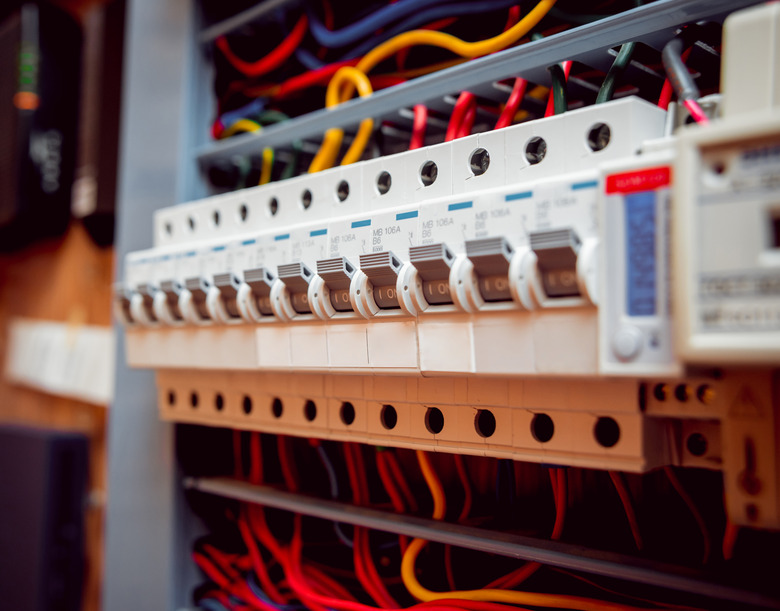Can You Switch A 15 Amp Circuit Breaker To A 20 Amp?
We may receive a commission on purchases made from links.
You walk into your bedroom, turn on the lights, and then plug in the vacuum. Suddenly all the lights go out. The problem? It could be a circuit breaker that is too small for the load on the circuit.
Breakers are designed to trip when the current exceeds that for which they are rated. Occasionally it happens that a breaker is rated for less amperage than the circuit can hold and in such a case, it's fine to upgrade to a higher rating.
Tip
You can upgrade your circuit breaker to a higher rating if the wiring is rated safe for 20 amps. A 20 amp circuit breaker must be wired with 12 gauge wire or larger. Otherwise, you may need fewer appliances using the circuit, or you may have a worn-out breaker that needs to be replaced with a breaker of the same size.
Causes of a Breaker Tripping
Causes of a Breaker Tripping
There are three likely reasons for a short circuit. One is you may have an overheated appliance that is pulling too many amps, or you have too many appliances running on the same circuit. That's something you can deal with.
Another cause is a damaged breaker. You have an old, worn out breaker that will trip no matter what you do. The third cause is a short circuit. This is where a hot wire is touching another hot wire. According to George Brazil Plumbing Electrical, the electricity is traveling the short route in the circuit, bypassing the appliance and causing overheating of the wire.
Check for a Short Circuit
Check for a Short Circuit
If you want to upgrade the breaker, then the first thing you need to know is whether it is tripping because of increased load or because of a short circuit.
Your first hint that it is likely not a short is if it trips when you use the vacuum cleaner. Just to be sure, you should do the following. Find the panel, usually located in the basement or an upstairs closet. You'll recognize the tripped breaker because its handle will be in the middle, tripped position.
With a normal load on the electrical circuit, that is minus the vacuum, turn the switch off, and then back on. It should remain on. If it trips again, then you probably have a short circuit and it's time to call the electrician.
Check the Wire Gauge
Check the Wire Gauge
Once you have ruled out a short circuit, it's time to check the size of the wire. There are two quick ways to do this. One is to remove the front of the panel and check the wire coming into the breaker. Alternatively, you can remove the cover from one of the outlets in the circuit and examine the wire coming into it.
You may have to loosen the screw that holds the outlet to its box. When doing this, be careful not to let your screwdriver stray too far from its task and touch the screws on the side of the outlet, or you may get a shock.
The National Electrical Code requires that a 20 amp circuit be wired with 12 gauge wire, so compare the wire to a sample of 12 gauge wire from the hardware store. If the strands are the same size or bigger, then you can upgrade the breaker. It's a good idea to check another outlet box to make sure that the same gauge wire is used throughout the circuit.
